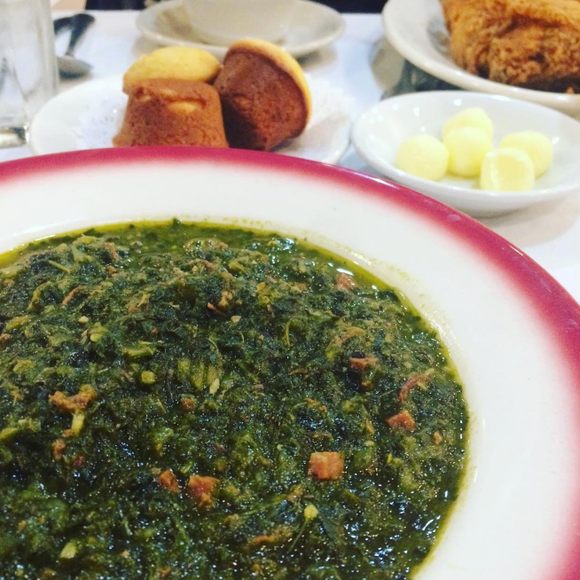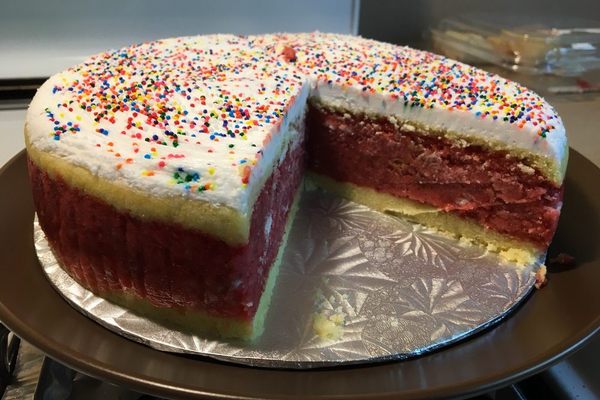Mardi Gras in New Orleans means weeks of celebration—parades, costumes, and lots of king cake. The party ends on Ash Wednesday, which falls between mid-February and early March and ushers in the Catholic season of Lent. On Fridays throughout this 40-day stretch, participants are forbidden from eating meat. To satisfy their appetites for savory, heavy foods, Creole observers developed gumbo z’herbes.
The dish’s name is an abbreviation of gumbo aux herbes, meaning “gumbo of greens.” It’s a fitting description, as each batch should ideally contain seven or nine different varieties. The Picayune’s Creole Cook Book (circa 1901) lists “gombo aux herbes” made with equal parts of the following types of “leaves”: cabbage, radish, turnip, mustard, spinach, watercress, and parsley. This recipe, likely meant for Holy Thursday, also called for veal brisket and ham.
Gumbo z’herbes shares commonalities with African callaloo (a stew named for the type of greens it contains) and French potage aux herbes (“herb soup”), but it’s most similar to the German “Green Thursday soup.” Green Thursday is synonymous with Holy Thursday—its name is derived not from the color, but from the German word for “weeping.” The vegetarian soup also uses seven or nine types of greens.
Many theories surround the symbolism of the greens. With regard to gumbo z’herbes, some say nine types of greens should be used, as they represent the nine churches that Catholics visit on Good Friday, in remembrance of Jesus’s walk to crucifixion. Others say that incorporating seven types honors the last words Jesus uttered on the cross. And some even claim that for every type of green a cook uses, they’ll make a new friend.
Bottom line when making gumbo z’herbes? The more greens, the better.
Written By
 rachelrummel
rachelrummel
Sources
- www.nola.com/food/index.ssf/2013/03/a_gumbo_zherbes_recipe_and_the.html
- www.washingtonpost.com/recipes/gumbo-zherbes/15213/?utm_term=.5f65c9134046
- books.google.com/books?id=5p3JazHY4UgC&pg=PA160&lpg=PA160&dq=New+Orleans:+A+Food+Biography.+williams+z%27herbes&source=bl&ots=cn-nOgwsGR&sig=hA8BzbA64g6JysXCWOgIKNd4zho&hl=en&sa=X&ved=0ahUKEwiIh6XQk_nZAhUOPN8KHcxmApgQ6AEINDAC#v=onepage&q=New%20Orleans%3A%20A%20Food%20Biography.%20williams%20z'herbes&f=false
- books.google.com/books?id=i1VR7iXrnmYC&q=z%27herbes#v=snippet&q=z'herbes&f=false
- www.nola.com/food/index.ssf/2010/05/green_or_herb_gumbo.html
- www.thefooddictator.com/hirshon-new-orleans-gumbo-zherbes/
- www.kitchenproject.com/german/recipes/Suppe/Grundonnerstagsuppe/index.htm
- germanfoods.org/recipe/chervil-soup/
- www.sharefaith.com/guide/Christian-Holidays/history_of_maundy_thursday.html
The Atlas Obscura Podcast is Back!


















